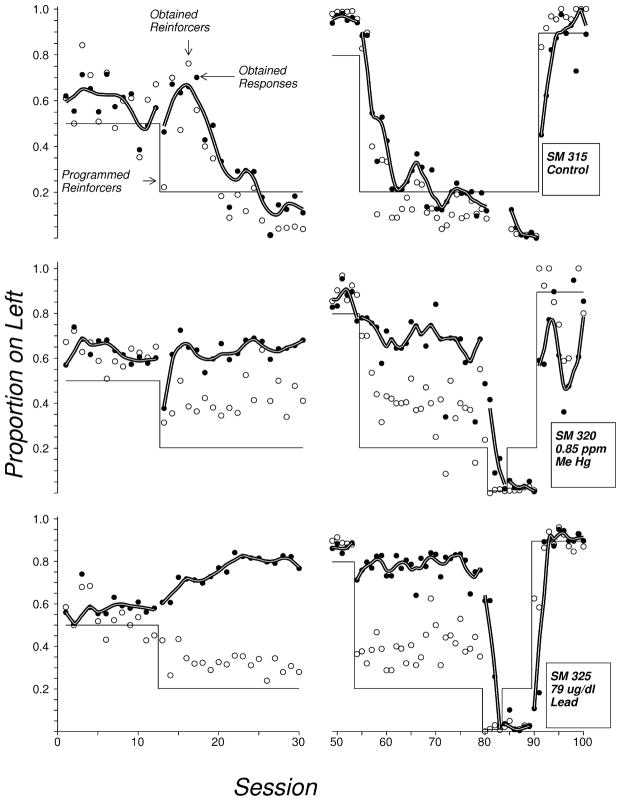Figure 2.
Three squirrel monkeys exposed to no contaminant, MeHg, or Lead (top to bottom panels) lever-pressed under concurrent schedules of reinforcement. The thin solid line shows programmed reinforcers, the open circles show obtained reinforcer and the filled circles show response proportion, all as a proportion of events on the left lever. The thick line is a LOWESS smoothed curve fitted to the response proportion. A “behavior therapy” condition commenced at about session 80: all reinforcers came from the right lever. Note that response proportions approximately matched reinforcer proportions but exposed monkeys’ behavior was relatively insensitive to changes in the source of reinforcement until the relative difference in reinforcer allocation became extreme.gr2

